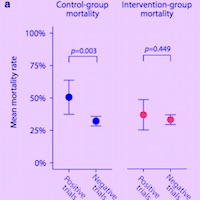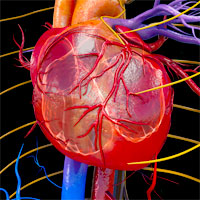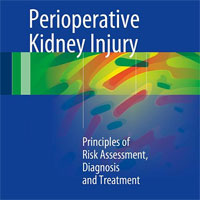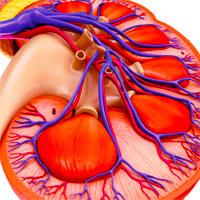
Driving Pressure in Airway Pressure Release Ventilation: a fool’s errand?
In this post I will briefly explain and critique their mathematical approach, propose a simpler equation for estimating PEEPi in APRV [based on far fewer physiological assumptions] and finally reaffirm why, in my opinion,... read more

Positive Outcomes, Mortality Rates, and Publication Bias in Septic Shock Trials
Out of 65 eligible septic shock trials, 14 did not have a clearly defined control group (two standards of care were compared) and were excluded. For the 51 remaining trials, control-group mortality ranged between 15.9%... read more

Impact of Hypophosphatemia on Outcome of Patients in ICU
Hypophosphatemia at admission is an independent risk factor for 28-day mortality in general ICU patients. The cohort included 946 patients with a median phosphate concentration of 0.77 mmol/L. Patients with hypophosphatemia... read more

New Approaches Reduces Inappropriate Antibiotic Usage
A UC Davis study of 9 emergency departments and urgent care centers in California and Colorado found educating physicians and patients about safe antibiotic use can cut overuse by 30%. The study, funded under a contract from... read more

Hypernatremia & Dehydration in the ICU
Hypernatremia is very common in the ICU. It often develops during ICU admission due to inadequate free water administration. Hypernatremia is not benign, it causes profound thirst, particularly among intubated patients, this... read more

Hypotensive Response to IV Acetaminophen in Pediatric Cardiac Patients
In isolation of other medication, a hemodynamic response to IV acetaminophen has a higher prevalence in critically ill children with cardiac disease than previously thought and justifies controlled studies in the perioperative... read more

Effects of Baseline Thrombocytopenia and Platelet Decrease Following RRT Initiation in Patients With Severe AKI
Baseline thrombocytopenia and platelet decrease following renal replacement therapy initiation were associated with increased mortality, and baseline thrombocytopenia was associated with decreased rates of renal recovery.... read more

Minimizing Catecholamines and Optimizing Perfusion
The main goal of hemodynamic resuscitation in shock is to improve tissue perfusion and oxygenation. As these cannot be directly evaluated at bedside in routine practice, physicians are left with surrogates such as perfusion... read more

An Innovative Virtual Reality Experience in the PICU
Virtual reality is an innovative, easily administered, and enjoyable tool that subjectively calms PICU patients in an otherwise chaotic environment. 100% of participants enjoyed using virtual reality, and 84% reported preference... read more
Who May Benefit Most From Future Vitamin D Intervention Trials
High-dose vitamin D3 supplementation was associated with a reduction of 28-day mortality in a mixed population of critically ill adults with vitamin D deficiency when excluding patients who died or were discharged within... read more

Validation and Critical Evaluation of the Effective Arterial Elastance in Critically Ill Patients
In critically ill patients, effective arterial elastance may be reliably estimated at bedside. We support the use of this validated estimate of effective arterial elastance when coupled with an index of left ventricular contractility... read more

Perioperative Kidney Injury: Principles of Risk Assessment, Diagnosis and Treatment
The kidneys participate in all vital processes of the body to maintain overall homeostasis and health. When kidneys are injured during surgical interventions, metabolic and hemodynamic control is disrupted, leading to dysfunction... read more

Huddling for High Reliability and Situation Awareness
This study objectives were to explore hospital administrator and frontline staff perspectives on the benefits and challenges of implementing a tiered huddle system; and propose a model based on our findings depicting the... read more

Acute Kidney Injury in Cirrhosis
Novel biomarkers may assist in identification of acute tubular necrosis and persistent/severe acute kidney injury (AKI). Norepinephrine has been suggested to be inferior to terlipressin, with additional research required.... read more








